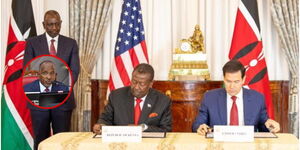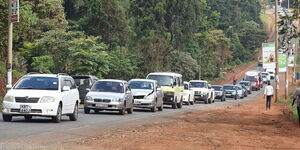Recently, there have been undertones about a plan by Government to recall the phased-out currency notes into the economy. The notes were in the Ksh1,000, Ksh500, Ksh200, Ksh100 and Ksh50 denominations.
The claim was accentuated by Kileleshwa Member of the County Assembly (MCA) Robert Alai who sensationally announced that the old notes were on their way back to circulation.
“Prepare your old notes. They are being brought back into circulation,” he posed.
A frenzy then ensued online with Kenyans debating whether to prepare their stashed old notes that they had failed to turn in for exchange with new notes.
"That old Ksh1,000 note was beautiful. It looked like money unlike this new one which looks like something from Cambodia or some unknown planet," a user known as Skippo Bruno sarcastically stated.
Kenyans.co.ke, as a result, sought the opinion of an expert, Economist XN Iraki, over the implications posed should the state reinstate the old notes.
The University of Nairobi Associate Professor from the Faculty of Business and Management argued that such a move would lead to a rise in inflation and cost the state an arm and a leg to manufacture the notes.
“It would be an interesting phenomenon were it to occur. The consequence of this would be a rise in inflation. This will also mean that the government will use huge amounts of money to print the old notes again,” he explained In an interview with Kenyans.co.ke.
In 2018, the cost of printing the new-look Kenyan currency increased by half to Ksh15 billion amid delays and the introduction of a new coat of varnish to reduce wear and tear and prolong its life in circulation.
“Government Consolidated Fund (GCF) resources are needed for the provision of new generation currency in line with the 2010 Constitution. CBK is mandated to issue new generation currency, with an expected cost of Ksh15 billion,” read the statement from CBK.
Iraki also cast doubt on the interested parties in the return of the notes since the initial phase-out was aimed at wiping out corrupt dealers.
“Who is going to benefit from the old notes being reintroduced? And why would it be considered?” he questioned.
Further, the professor states that governments phase out old currencies in order to get rid of counterfeits circulating in the economy.
“Governments normally phase out old currency to counter inflation of fakes in the economy. Printing the old currency back would thus defeat that purpose. India and Nigeria have gone through that process too. Apart from stopping counterfeits, it also enables citizens to have more faith in their currency," he added.
Kenya withdrew the notes to crack down on embezzlement and tackle a wave of counterfeit Ksh1,000 shilling notes.
Central Bank Governor Patrick Njoroge, at the time, expressed "grave concern" over larger banknotes being used for "illicit financial flows in Kenya and also other countries in the region."
During the demonetisation exercise, 209,661,000 of 217,047,000 pieces of old notes that were in circulation were returned. Only 7,386,000 KSh1,000 notes remained at large.
While at the 56th Madaraka Day celebrations in 2019, former President Uhuru Kenyatta launched the new currencies.
According to article 231(4) of the Kenyan Constitution, it was a requirement that CBK print new generation notes and coins that have no images of individuals.
“Notes and coins issued by the Central bank of Kenya may bear the images that depict or symbolise Kenya or an aspect of Kenya, but shall not bear the image of an individual,” Article 231(4) of the Constitution reads.
The new generation currencies embody diverse wild animals including the lion, the elephant, the rhino, the buffalo and the giraffe.

EPRA Releases Fuel Prices for December-January Cycle Breaking News











